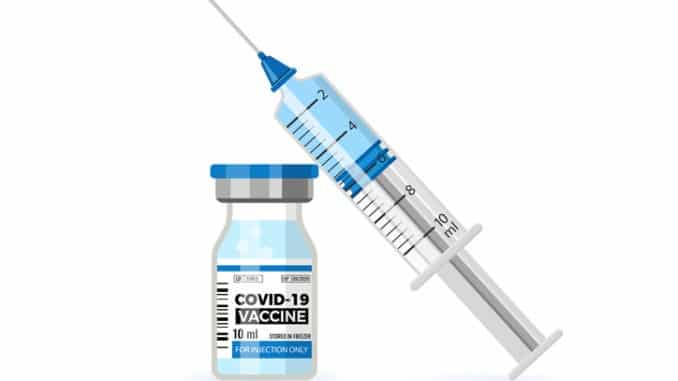
The Joint Committee on Vaccination and Immunisation has played a crucial role in advising on prioritisation and scheduling in the UK, writes Jo Best
CREDIT: This is an edited version of an article that originally appeared on The BMJ
What is the JCVI?
The 16 experts who make up the independent Joint Committee on Vaccination and Immunisation (JCVI) advise UK health departments, help develop immunisation programmes, and identify gaps in knowledge about vaccines and immunisation strategy. During the COVID-19 pandemic they have advised on who should receive a vaccine and when.
The secretary of state for health sets the committee’s remit and appoints JCVI members on the advice of the Department of Health and Social Care (DHSC) and Public Health England. The DHSC uses JCVI advice to set policy, which the NHS puts into practice. The JCVI, typically, meets three times a year, but the COVID-19 sub-committee now meets about twice a week.
Who sits on the JCVI?
Members are mostly from universities and public health bodies, with backgrounds in virology, infectious diseases, epidemiology, general practice, respiratory medicine and pharmacology; one or two are lay members. The chair, Andrew Pollard, professor of paediatric infection and immunity at Oxford University, recused himself from the committee’s COVID-19 work because of his involvement in the development of the Oxford AstraZeneca vaccine. Wei Shen Lim, a consultant respiratory physician at Nottingham University Hospitals NHS Trust, chairs the COVID-19 subcommittee.
The JCVI states that there must be ‘no perception of conflict between a member’s private interests and his or her responsibilities’. No conflicts were recorded in the COVID-19 sub-committee’s most recently published minutes.
How does the JCVI make recommendations?
It considers scientific and clinical data, existing recommendations, expert advice, modelling, attitudinal research and evidence from charities and researchers. The committee can request unpublished data from vaccine manufacturers.
“Usually, decisions are made with a lot of information that’s already known,” Lim told The BMJ. “Whereas, in the pandemic, we’re making decisions sometimes with information that is just out, and that is difficult.” For COVID-19 it has considered disease epidemiology and characteristics, risk factors, demographics, occupational exposures, vaccine inequalities, information from clinical trials and modelling of different vaccination programmes.
“The speed of deployment is so much greater a factor for a mass vaccination programme,” Lim said. Usually, the NHS has months to plan vaccination programmes, he explained. “As we learn more about the pandemic, the virus, and the vaccine, it’s a constant review process for any decision we’ve made.”
What has it recommended for COVID-19?
EU and UK regulators have not set age restrictions for the Oxford AstraZeneca vaccine after finding that blood clots could be a ‘possible’ and ‘extremely rare’ side effect – no causal relation has been established – but the JCVI has said that healthy adults under 30 should be offered an alternative vaccine where possible.
Revised advice on dosing recommends prioritising first doses over second doses, and recommends a maximum of 12 weeks between doses. While the manufacturers Pfizer and AstraZeneca stated that second doses should be given three weeks after the first, the JCVI advised a longer interval to increase the number of first doses that could be given.
This was controversial, as the NHS had, initially, scheduled second doses for three weeks after the first, only to switch once the JCVI amended its advice at the end of December, following an increase in cases involving the B117 variant. First identified in Kent, this variant was suspected to be more transmissible and deadly. The JCVI does not currently recommend mixing doses from different manufacturers.
In terms of prioritisation for the first phase of the vaccine programme, the JCVI recommended nine priority groups that should be vaccinated first, including people over 50, clinically vulnerable people, and patient-facing healthcare workers – with people in care homes and their carers the highest priority. Interim advice for the second phase of the vaccination programme recommends further prioritisation by age; 49-to-40 year olds, then 39-to-30 year olds, then all other adults.
Should ethnic minorities and teachers be prioritised?
The committee decided not to designate people from ethnic minorities, who are at greater risk of hospital admission and mortality, as priority groups. It argued that prevalent comorbidities and social factors increase such risks, and that existing priority groups already include those at increased risk. It does, however, recommend increased promotion of vaccines to people in high-risk groups.
The JCVI initially said that a second vaccination phase could, potentially, prioritise vaccination by occupation – but in February decided that this ‘would be more complex to deliver, and may slow down the vaccine programme, leaving some more vulnerable people at higher risk unvaccinated for longer’.
‘Unvaccinated people who are at increased risk of severe outcomes from COVID-19 on account of their occupation, male sex, obesity or ethnic background are likely to be vaccinated most rapidly by an operationally simple vaccine strategy,” the committee has stated.
Does JCVI respond to public opinion?
“It’s important to hear what the public wants, but we also have to be aware of what is scientifically valid,” says Lim. Confusion surrounds recent calls for people with learning disabilities to be prioritised; people on the GP learning disability register are now in priority group 6.
However, this was due to a change in NHS practice, not a change in JCVI recommendations. Severely affected people, including those with learning disabilities, were generally already in priority groups because they have comorbidities or are in residential care.


Be the first to comment